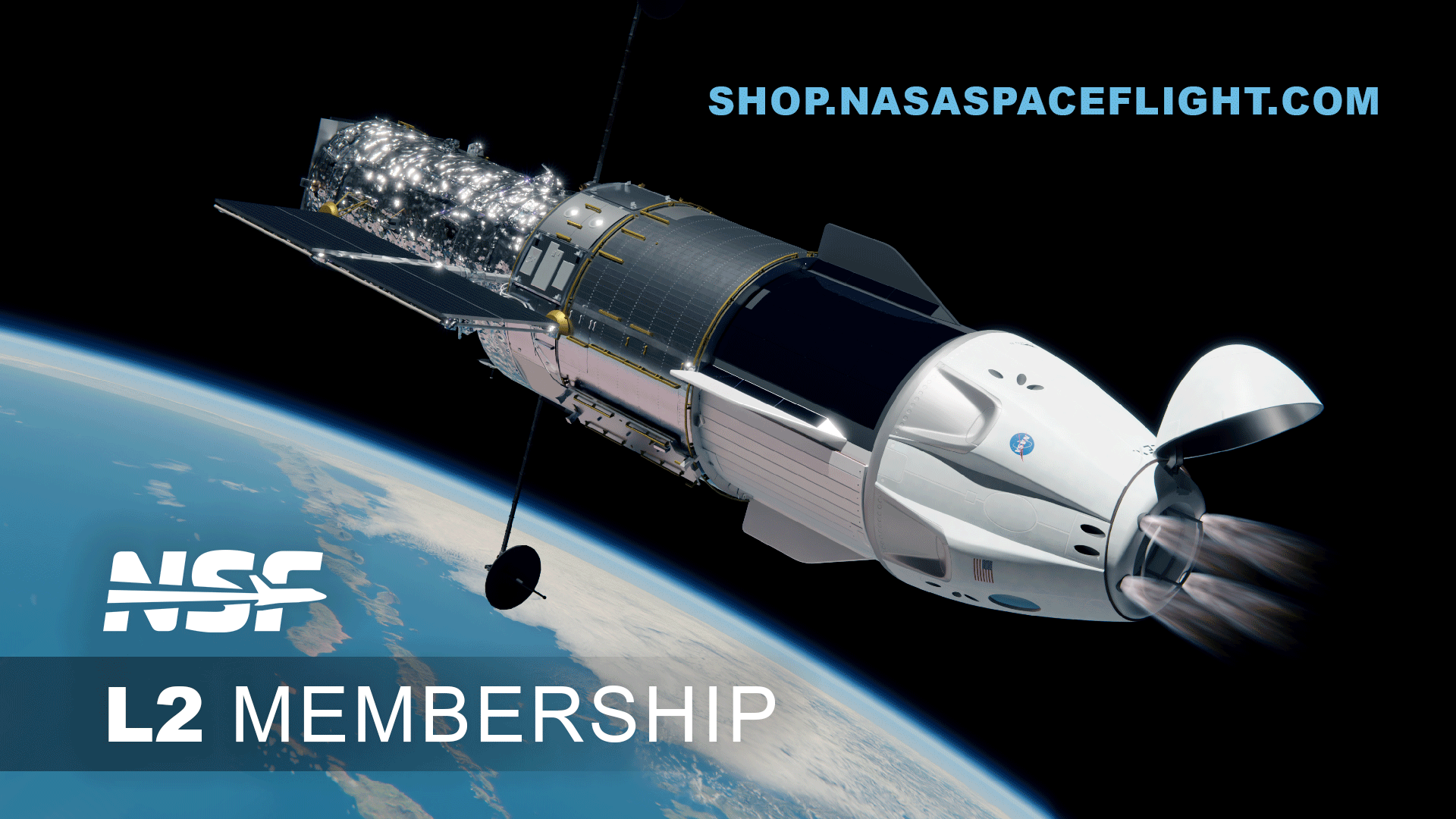The Starship program is conducting tests with an eye toward a possible takeover for the system’s next flight, a goal that appears more within reach after the successful soft landing of Flight 4. In addition to moving a booster test section—Booster 14.1—to the orbital launch pad, construction is underway on a second orbital launch pad at Starbase, using lessons learned from the first pad.
There are many signs that a capture attempt may take place during Starship’s fifth flight. Elon Musk actually posted on X, the social network formerly known as Twitter, that he thought there should be a capture attempt during Flight 5. A new communications license from the Federal Communications Commission of the United States (FCC) stipulates that there will be either a soft landing in the ocean like in the last flight, or a capture attempt at the orbital launch site.
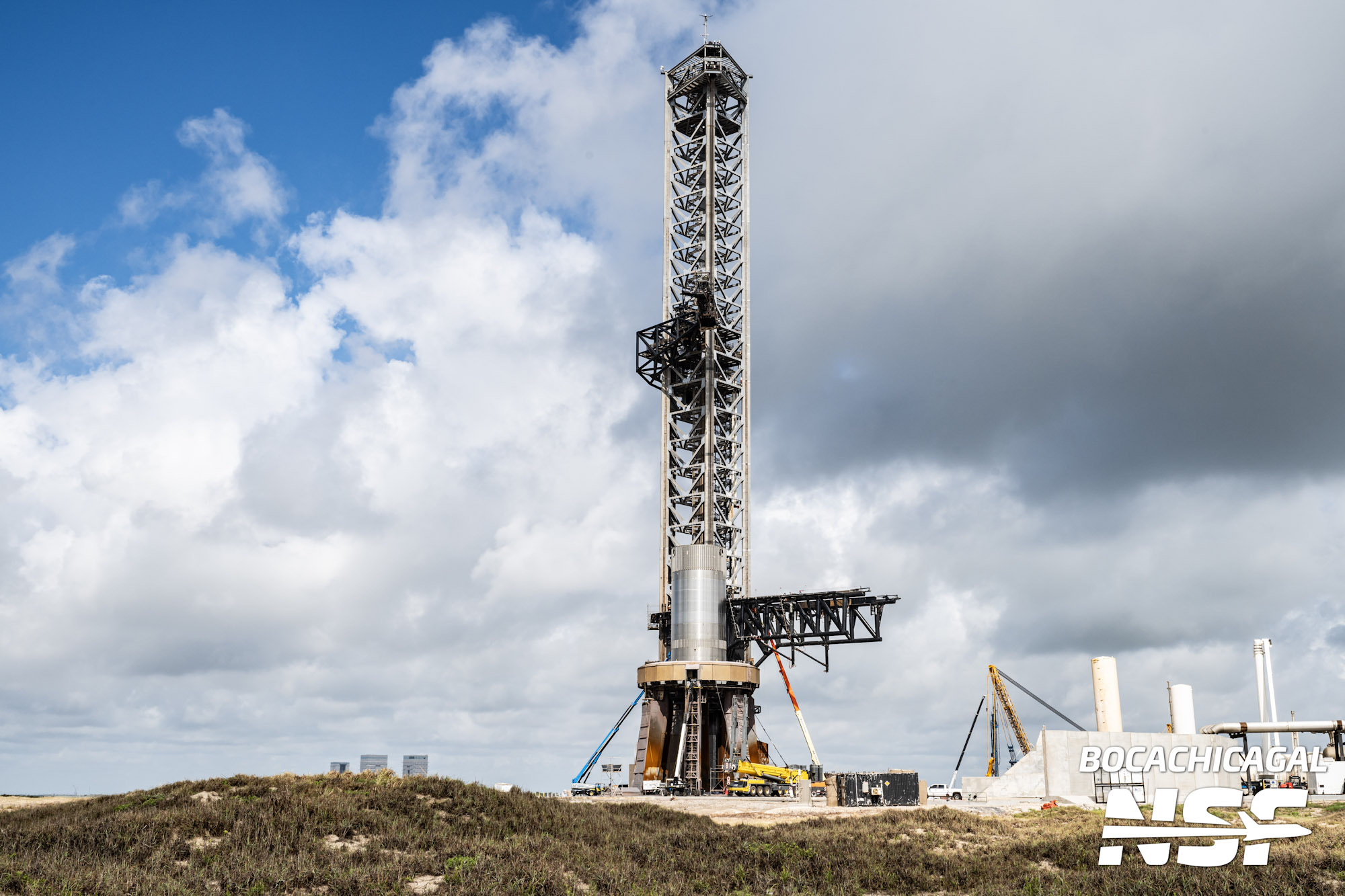
Booster 14.1 scaled up against Mechazilla and the launch tower. (Credit: BocaChicaGal for NSF/L2)
The most significant sign of SpaceX’s near-term flight testing intentions was the deployment of a new test article known as Booster 14.1. B14.1 is a small simulated methane tank, comprising a forward booster dome, a common dome, and a quadruple methane tank section.
The truncated booster article was installed on the orbital launch pad by crane after carrying out tests with the new crusher cap and lifting points at the former Masseys firing range, now a test site for Starbase.
Three upcoming road closures have been listed for Starbase: Tuesday, June 25 from 12:00 p.m. to 8:00 p.m. CDT (5:00 p.m. to 01:00 a.m. UTC, June 25 and 26), Wednesday, June 26 from 8:00 a.m. to 8:00 p.m. CDT (1:00 p.m. to 1:00 a.m. UTC, June 26 and 27 and Thursday, June 27 at the same times as the June 26 closing.
However, SpaceX has since revoked the June 25 and June 27 shutdowns and used the June 26 shutdown for testing purposes.
HA! And now we know why they use a test tank for these tests. #SLAPhttps://t.co/fkcXWYv7Vv pic.twitter.com/EPalY02JGm
– Chris Bergin – NSF (@NASASpaceflight) June 26, 2024
The June 26 shutdown was used to test B14.1 and SpaceX scheduled an intermittent shutdown on June 27 from 12 p.m. to 4 p.m. for further testing. However, contrary to popular belief, SpaceX did not recover the shortened test booster, nor was it filled with propellant or water.
Instead, SpaceX pressurized the test tank, and the north arm quickly closed and struck the tank. SpaceX is testing this because during actual capture operations, the arms will need to close and touch the booster in order to place the landing rails under the lift points.
While B14.1 has been prepared for testing with the “wand” arms, likely as part of testing the system’s response before any capture attempts, other activities at Starbase are preparing the site for a busy and active future of launches, at least when there are no storms in the area.
SpaceX also implemented temporary closures from 10:00 p.m. June 26 to 2:00 a.m. Central Time on June 27 (3:00 a.m. to 7:00 a.m. UTC on June 27), with the same times on June 27-28 and June 28-29. These closures were put in place to transport the final sections of the tower from Brownsville Harbor to the Sanchez site, but the barge carrying the tower is not expected to arrive at the port until June 28. It is very unlikely that any of these closures will be used.
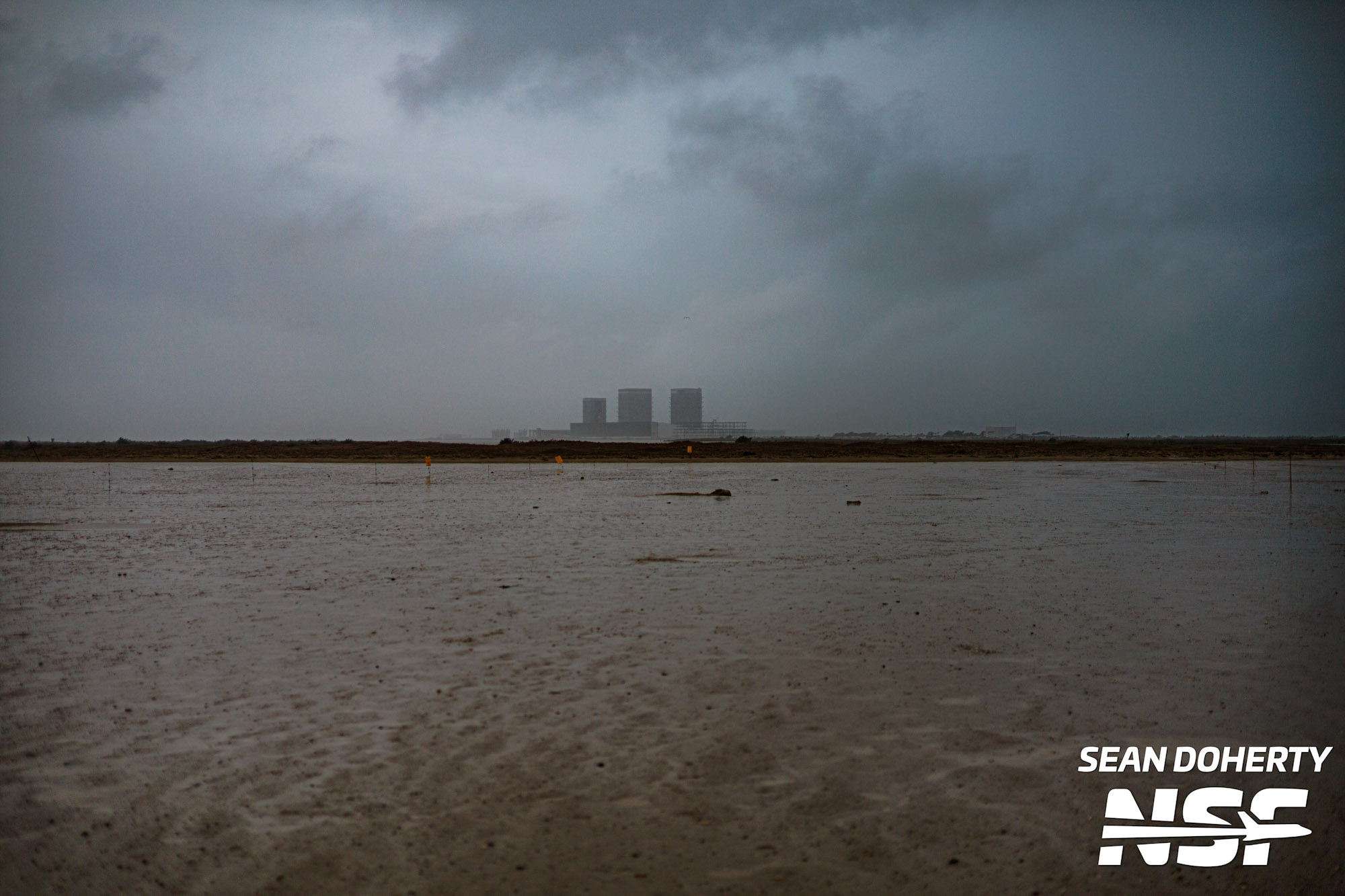
Flooding at Starbase on June 20, 2024. (Credit: Sean Doherty for NSF/L2)
On June 20, weather conditions in the area became so bad that work had to be stopped. Winds made it impossible to work safely at height on the tower, while Highway 4 was flooded by heavy rain. Weather conditions also forced a barge carrying parts of the launch tower to stop in Tampa during its journey from Port Canaveral to Brownsville.
A second orbital launch pad is being built on the site of the old suborbital launch pads, and a support foundation has been prepared for the second tower. Large concrete pillars are now visible, and the final sections of the tower and the “Mechazilla” pieces are back in transit from Florida across the Gulf of Mexico. The pillars appear to be different from those that supported the first orbital launch pad, and the new designs for the tower and launch pad will no doubt be inspired by the experience of the first orbital launch site at Starbase.
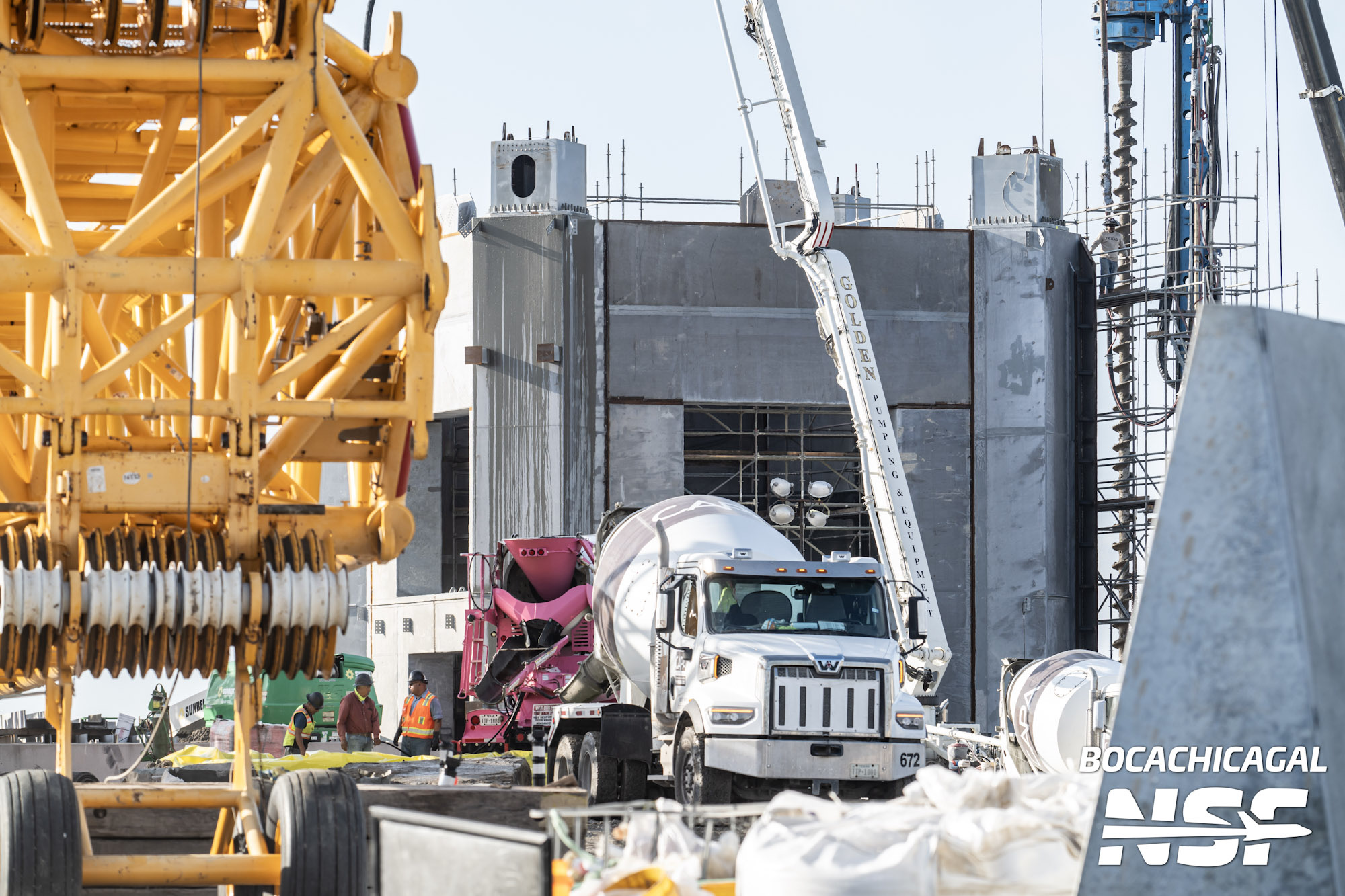
The pillars of the second orbital launch pad are seen here in operation. (Credit: BocaChicaGal for NSF/L2)
The orbital tank farm, which will support the two launch pads, received a new long horizontal tank this week to increase its capacity and is currently being installed. While the tank farm is being modernized, the old vertical tanks built much earlier in the program are currently being dismantled.
Currently, all cryogenic shells that were on the old vertical tanks have been scrapped. The old tank farm, with tanks built similarly to the Starship test craft, will be removed to eventually make way for additional infrastructure related to the current or new launch pad.
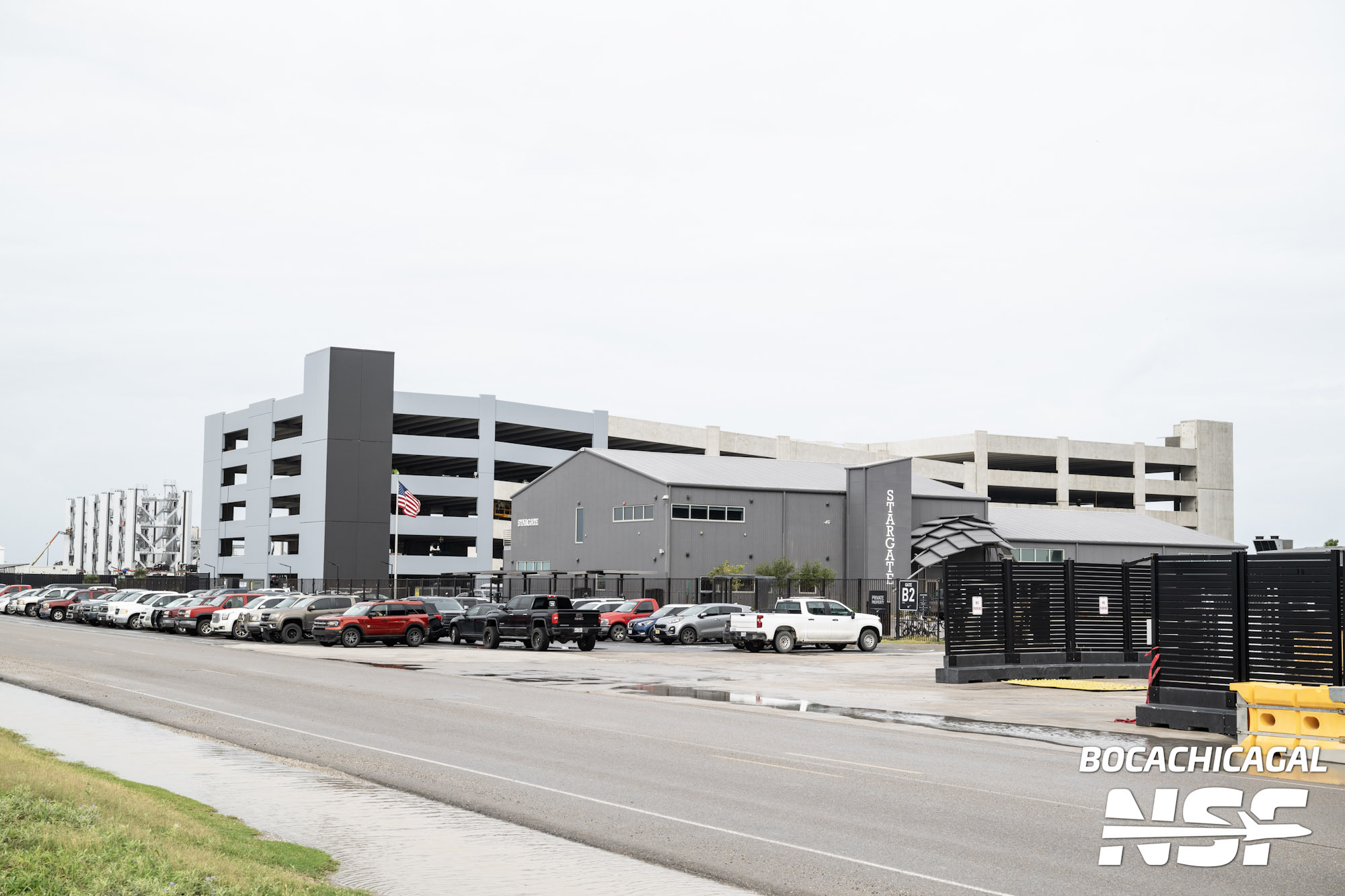
The new parking lot is shown here with the tower segments for the second launch pad. (Credit: BocaChicaGal for NSF/L2)
In addition to the launch infrastructure, the program required extensive work on buildings such as a new parking lot and an office building. The parking lot is almost complete and a sign that it is operational will be if there is traffic-reduced parking on the Highway 4 side. In the meantime, a new office building has received additional levels.
As for when Flight 5 will fly, the entire heat shield, made up of more than 18,000 tiles, is being replaced in order to play a role when the flight is ready. Old tiles are replaced with newer, stronger tiles, along with an ablative heat shield beneath these tiles for additional thermal protection.
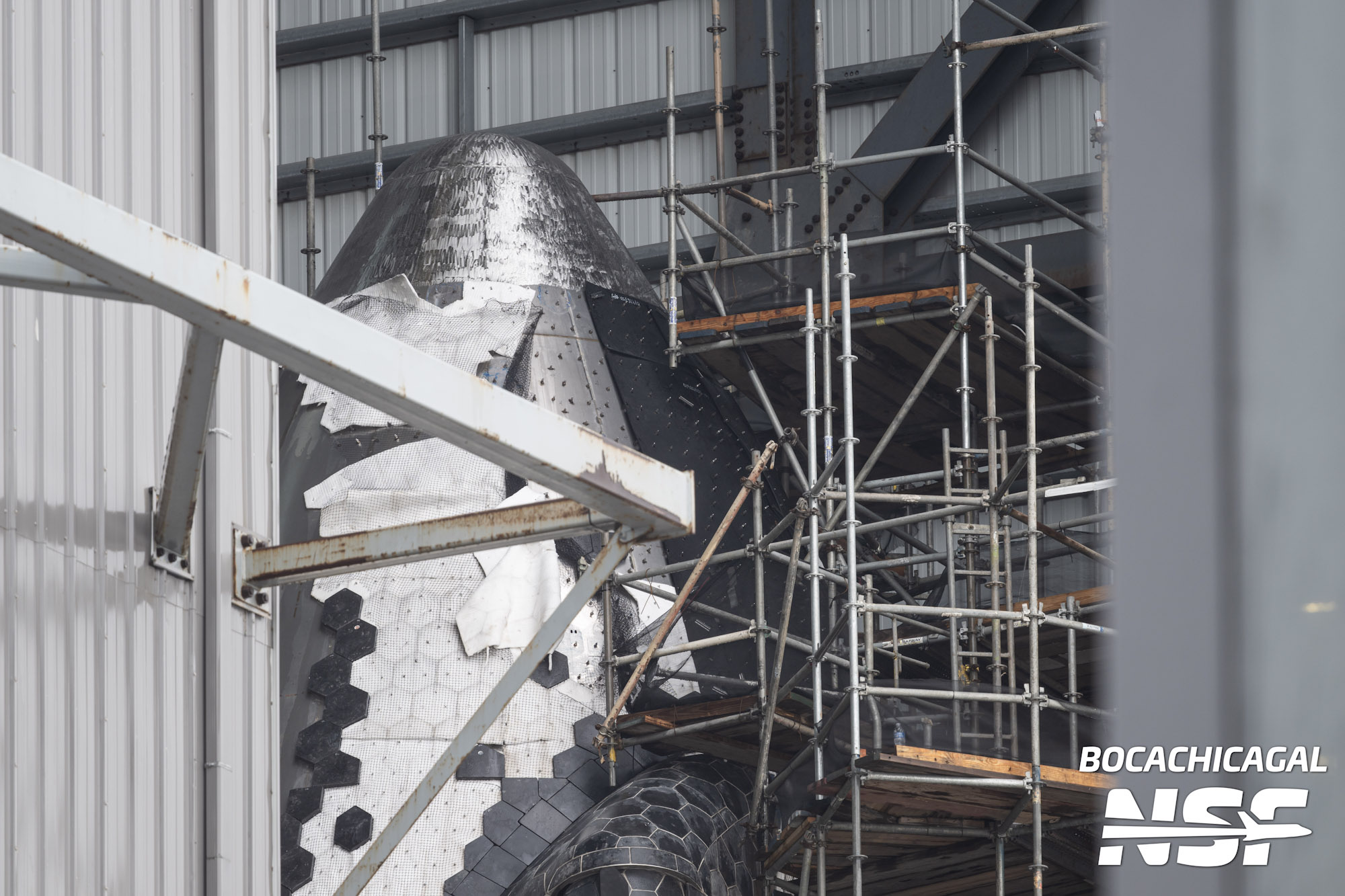
Work underway on the heat shield of Ship 30. (Credit: BocaChicaGal for NSF/L2)
Starship can now fly missions with very similar profiles to Flight 4 with the existing FAA license, but a license modification is required for any capture attempt. If Flight 5 does indeed make a tower capture attempt for Booster 12, additional paperwork will need to be filed for this license modification.
Inspections and work are underway on the orbital launch pad and mount to prepare for Flight 5 as well. Musk has indicated that the goal for this mission is to launch in late July, but it is very likely that this will be delayed to August or even early September. Regardless of the flight date, it will be another case of “guaranteed suspense,” especially if an attempt is made to capture the tower.
(Main image: Booster 14.1 on the orbital launch pad. Credit: BocaChicaGal for NSF/L2)
